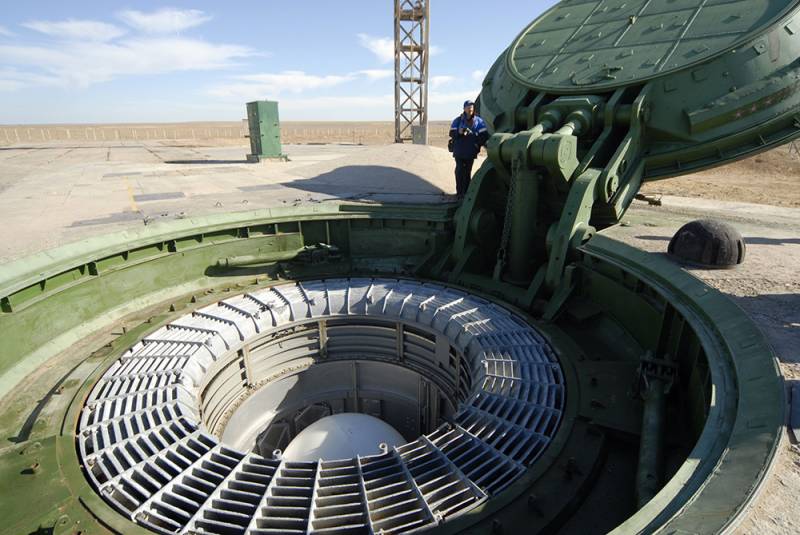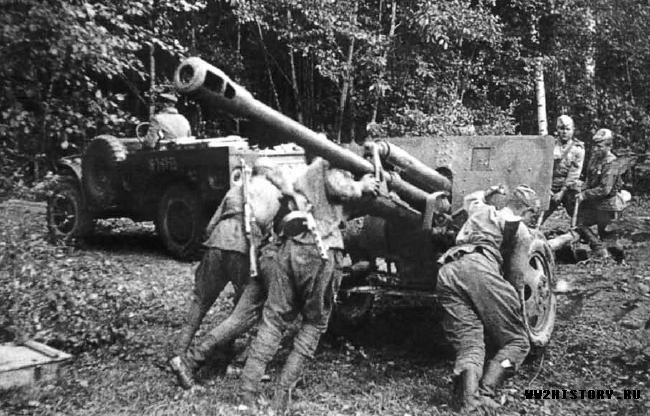Presentation on the theme of "mixed forests." Mixed Forest Animals What is Mixed Forest
Slide 1
 Slide 2
Slide 2
 Slide 3
Slide 3
 Slide 4
Slide 4
 Slide 5
Slide 5
 Slide 6
Slide 6
 Slide 7
Slide 7
 Slide 8
Slide 8
 Slide 9
Slide 9
The presentation on the theme "Animal World of the mixed and deciduous forest zone" can be downloaded absolutely free on our website. Subject of the project: The world around. Colorful slides and illustrations will help you interest your classmates or audience. To view the contents, use the player, or if you want to download the report, click on the appropriate text under the player. The presentation contains 9 slide (s).
Presentation Slides

Slide 1

Slide 2
Presentation prepared by primary school teacher
MBOU №40, Simferopol, Republic of Crimea Inna Nikolashina

Slide 6
This mighty giant weighs almost a ton. A powerful scruff, a heavy shaggy head with horns, a gloomy look from under the furry bangs inspire awe in anyone. And when the bison rushes, jumping over fallen trees, stumps and pits, it seems that he will sweep everything in his path! The adult bison is so strong that it has no natural enemies ... except for man. At the beginning of the twentieth century, hunters killed the last bison living in the wild. Fortunately, several bison survived in private zoos in Western Europe. In 1923, the International Society for the Salvation of Bison was created (there were only 56 of them at that time), and scientists managed to save these powerful, beautiful animals.

Slide 7
Wild ancestors of domestic pigs - wild boars - are covered with length and stiff bristles. The male is larger than the female, and by the age of five he becomes so powerful that he can even fight back the bear. Sharp, strong fangs help him in this. Wild boars have poor eyesight, but their hearing and instinct are excellent. Sensing danger, they are hiding in a forest thicket with a bullet. And they eat everything: nuts, acorns, rhizomes of plants, fruits, bird eggs and chicks, mice and rabbits, and even carrion. In early summer, the boar arranges a den with thick walls, soft bedding and a roof of twigs and dry grass. Here, striped babies are born and spend the first two weeks of life. Leaving the nest, a caring mother covers the piglets with bedding. Just a week after birth, nimble babies follow their mother everywhere.
Tips for making a good presentation or project report
- Try to engage the audience in the story, set up interaction with the audience using leading questions, the game part, do not be afraid to make a joke and smile sincerely (where appropriate).
- Try to explain the slide in your own words, add additional interesting facts, you don’t just need to read the information from the slides, its audience can read it itself.
- No need to overload your project slides with text blocks, more illustrations and a minimum of text will allow you to better convey information and attract attention. The slide should contain only key information, the rest should be told verbally to the audience.
- The text should be well readable, otherwise the audience will not be able to see the information provided, will be very distracted from the story, trying to make out at least something, or completely lose all interest. To do this, you need to choose the right font, given where and how the presentation will be broadcast, as well as the right combination of background and text.
- It is important to rehearse your report, to think about how you say hello to the audience, what you will say first, how to finish the presentation. All comes with experience.
- Choose the right outfit, because The speaker’s clothing also plays a large role in the perception of his presentation.
- Try to speak confidently, smoothly and coherently.
- Try to enjoy the performance, then you can be more laid-back and worry less.
Slide 2
There is just a temple, There is a temple of science, And there is still a nature temple With forests stretching hands Towards the sun and winds. He is holy at any time of the day, Open to us in the heat and shame, Enter here, be a bit in your heart Do not defile his shrines.
Slide 3
Mixed and broad-leaved forests grow in the central regions of the European part of our country, in the southern regions of Siberia and the Far East. Mixed forests consist of coniferous and small-leaved species (spruce, pine, birch, aspen). Broad-leaved forests consist of oak, linden, maple, elm, ash, and beech.
Slide 4
These forests are multi-tiered: -1 tier - coniferous, oak, ash, linden. -2 tier - less tall trees (apple trees, mountain ash); 3-4 tier - undergrowth of shrubs, bird cherry, hazel, spindle tree. -5 tier - herbs (medunitsa, hoofed grass), mushrooms.
Slide 5
Spruce
Deciduous trees and conifers (spruce, pine) grow in mixed forests.
Slide 6
Ash
Ash - this is a beautiful tree that grows in deciduous forests, together with other tall trees forms the upper tier.
Slide 7
Maple
Maple, as well as ash, belongs to broad-leaved trees and makes up the first, upper tier.
Slide 8
Birch tree
Birch is a beautiful tree that grows in mixed forests. You can recognize a birch by its very beautiful white-black bark. And her leaves are like a heart.
Slide 10
The lowest tier is composed of different herbs: chickweed, Lungwort, Zelenchuk, hoofed eggs, and also mushrooms: chanterelles, honey agarics, fly agaric, and pigs. soap dish amanita red
Slide 11
Mixed forests are characterized by warm summers and relatively cold and long winters. Deciduous trees dump leaves for the winter.
Slide 12
The fauna of mixed and deciduous forests is rich and diverse. This is a hare, elk, squirrel, capercaillie, deer, wild boar, roe deer, cuckoo, black polecat, mink, weasel, red deer. weasel squirrel
Slide 14
During the winter, some animals hibernate. Many burrows are filled with food collected over the summer, but sometimes the animals also have enough subcutaneous fat accumulated during the warm season, which allows them to survive the long winter. Other animals seek food in dense thickets where there is less snow. roe deer
Slide 15
In our time, the fauna of deciduous forests has undergone great changes under the influence of human activity. The number of many animals decreased, some of them almost disappeared, others, on the contrary, became more numerous. In our country, work is underway to restore and protect natural resources. This also applies to the zone of mixed and deciduous forests. lynx
Slide 16
If you will observe our forest for a long, long time, You will see a lot of your beloved old forest here, How small fishes frolic in the water A chilly wind flutters, Like small insects and snails A friendly family lives.
View all slides
Presentation on the theme: "The animal world of the mixed forest" Prepared the presentation:
Pupil 8G class
Koval Tatyana
What is a mixed forest?
Mixed Forest -forest,
characterizing
mix
conifers and
hardwood
tree species.
The climate is mixed forest.
In placesgrowth
mixed forests
usually warm
summer and relatively
cold and medium
by
duration
winter. Annual amount
atmospheric
precipitation in this zone
up to 600-700 mm.
Amazing mixed forest birds.
Herbivores
Predators
ErmineListed in the Red Book.
Bison is the heaviest and largestterrestrial mammal in Europe.
This is the last wild bull of the Old
Sveta. Bison wool at birth
has a reddish tint, but with
becomes dark brown with age.
Mink is a predatory mammal
of the marten family, long
time was an object
fishing because of valuable fur. AT
its current size
declining everywhere due to
mink crowding
American.
Why is mixed forest very diverse in wildlife?
Diversityvegetation of this zone
due to differences
climate: temperature
rainfall and
the mode of their loss, and
they also differ
resistance to negative
environmental influences
medium mosaic
buildings. Mixed forests
have a prominent
tiered. 1) Lynx is quite interesting
to a person, she can easily break
his neck, but at the same time, avoids people and
Don't attack them;
2) Lynx never attacks from above,
hiding on tree branches or on
the slopes of the rocks they track their
prey or rest;
3) Wolves distinguish about 200 million
shades of smell, people are only 5 million.
Natural zone of mixed and deciduous forests

Geographical position
The zone of mixed and broad-leaved forests stretches from the western borders of Russia to the Ural Mountains, and then a thin strip to the source of the Ob River.

Typical Forest Zone Appearance
In this zone, a mixed character of the species composition of the flora is observed. Here you can find linden and maple, oak and pine and of course a birch.
My birch is a birch! White birch, curly birch. You stand, birch, in the middle of the valley. On you, birch, green leaves. Under you is a birch, silk grass ...

The climate of the forest zone
This zone is located in the temperate climate zone, where summers are long and warm, and winters are short and cold. The average July t is from + 16 ° to + 24 ° C, and in January from -8 ° to -16 ° C. Precipitation is up to 600 mm per year, mainly in the summer, with sufficient moisture.

Soils and their properties
The soils here are sod-podzolic, gray forest. They contain a large amount of nutrients, are well-drained, and do not have excess water.

Vegetable world
The flora of forests is diverse: “Soft, tender forest. Spruce grows next to an oak, a pine with a ruffled top soared above the forest with a copper stem, a maple-tree maple and a round linden appeared, the ash-tree waving its feathery leaves, the aspen was shocked ... ”N. Mikhailov.

Animal world
Representatives of many species live in mixed and deciduous forests - this is a badger, hedgehog, wood mouse, elk, squirrel, hare, roe deer, lynx, dormouse, beaver, woodpecker, black grouse. The animal world is also rich in giants - the Ussuri tiger, the Amur snake, the Ussuri relic barbel.

Forest animals
squirrel
Red fox
pheasant
deer
hedgehog
black grouse

Using zone resources
-Mixed and broad-leaved forests are the best places to relax -These forests are the areas for picking mushrooms, berries, medicinal plants -Mixed forests are a paradise for hunters

Problems of nature conservation
Deforestation of a significant part of forests, drainage of swamps - all this affected the species composition of the zone. Now forests occupy 30% of the area. In their place are arable land, gardens, pastures. Reducing the species composition of the plant and animal world.
To use the preview of presentations, create yourself a Google account (account) and log in: https://accounts.google.com
Slide captions:
Animal forests Description, features of the appearance of animals in the forest.
Hedgehog Hedgehog is a small animal. The hedgehog lives in mixed and deciduous forests, preferring edges, clearings, and bushes.
Hare-hare Hare-hare lives in the taiga and mixed forests; prefers spruce areas with deciduous undergrowth and grass cover. It can be seen on overgrown felling and burnt areas, in willow thickets along the outskirts of the marshes.
Chipmunk The animal is a little less than a squirrel. Hind legs slightly longer than front. The tail is less fluffy than the squirrel. Chipmunk prefers to live in coniferous forests on the fringes, in shrubbery, on burns and clearings, wherever there is felling.
Wolf Wolf is a large beast with relatively high and strong legs; elongated muzzle, pointed ears. The wolf is widespread in our country, except for some islands of the Arctic and Pacific Oceans. The wolf lives in forest, forest-steppe zones, even in the steppe, but prefers sparse forests
Wild boar Lives in mixed and deciduous forests, along the banks of forest rivers and lakes. Wild boars are kept in herds, sometimes consisting of several dozen animals. They are active mainly at night, and during the day they sleep under the protection of trees or in thickets of shrubs and tall grass
Elk Elk is a typical forest animal; it prefers young forests, overgrown burns and cutting areas located among sections of the old forest, as well as floodplain forests with dense thickets of willow trees near forest marshes and water bodies rich in wetland vegetation.
Squirrel Common squirrel lives in taiga, mixed and broad-leaved forests. In summer it is active in the morning and evening hours, and in winter - throughout the day.
Fox Fox lives in different parts of the forest, but avoids dense massifs, preferring the edges of mixed forests, old felling and burning, the banks of forest rivers, lakes.
Brown bear Brown bear's favorite habitat is taiga coniferous forests, less commonly deciduous forests with abundant windbreak.
Badger A badger lives in mixed forests, preferring forest edges, coppices, forest ravines.
Shrew ordinary. Outwardly, the animal resembles a mouse or field vole, but it has a pointed muzzle with an elongated proboscis, small ears and tiny eyes. The shrew lives in coniferous, mixed and deciduous forests, preferring moist, impassable areas. Often found in floodplains of forest rivers and streams, in forest ravines.
Crossword "Forest inhabitants" 2 3 2 3 4 4 1 2 3 2 3 4 4
On the topic: methodological developments, presentations and summaries
A lesson from the outside world in grade 3. Topic: Securing the material covered on the topics: “Ecosystems of forests, lakes, swamps and meadows”. NRC “Animals and plants of ecosystems of the forest, lake, swamp and meadow Chelyab
Lesson-consolidation of the material covered on the topics: "Ecosystems of forests, lakes, swamps and meadows." NRC "Animals and plants of the ecosystems of forests, lakes, swamps and meadows of the Chelyabinsk region." Organization of a lesson on t ...
The lesson discusses the diversity and life of plants, the benefits they bring to people, the need to protect the flora of our country, the rules of behavior in the forest; improve ...




